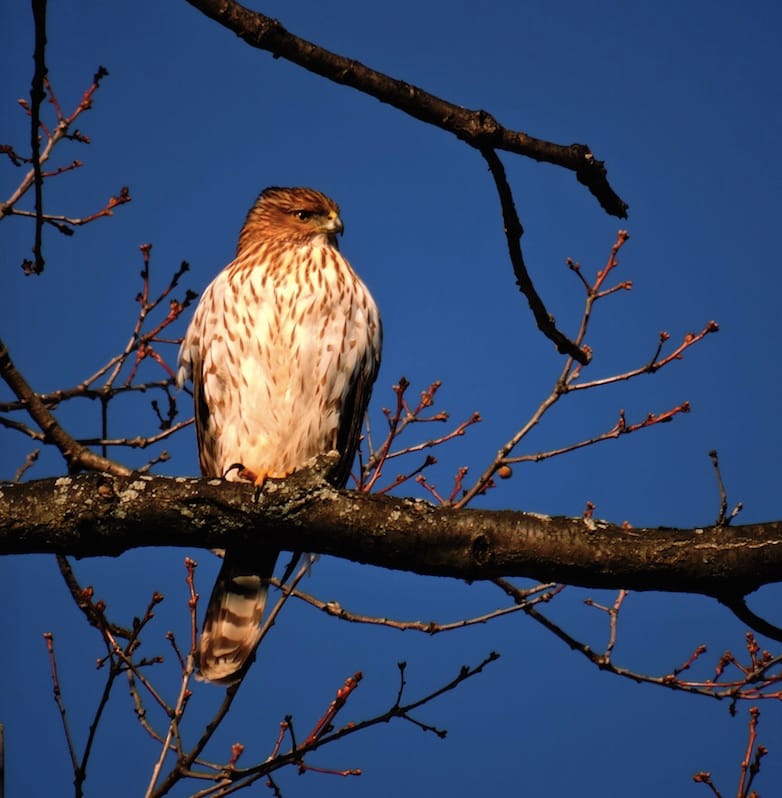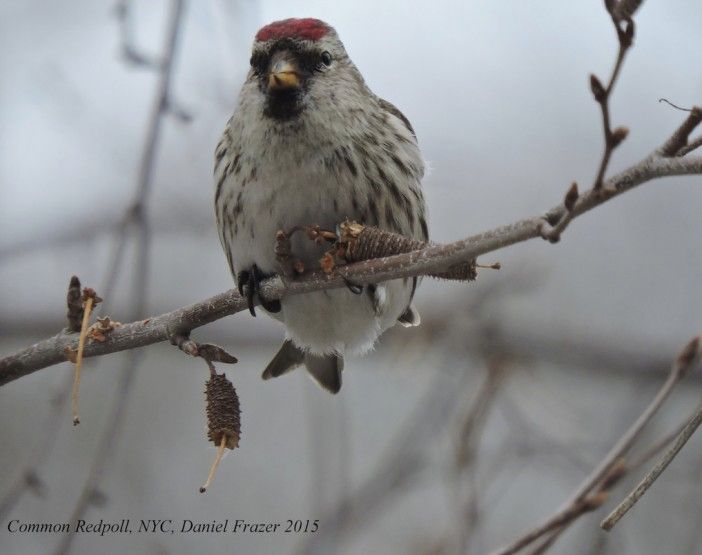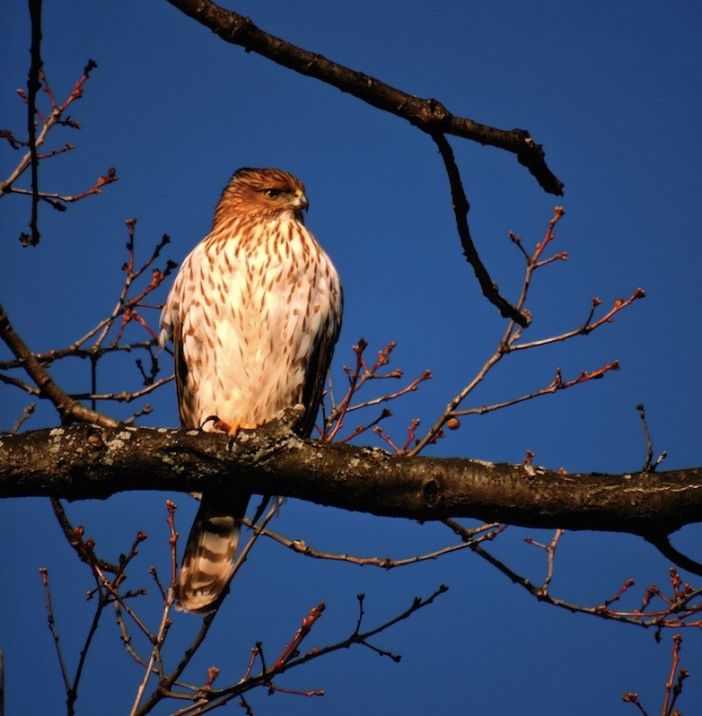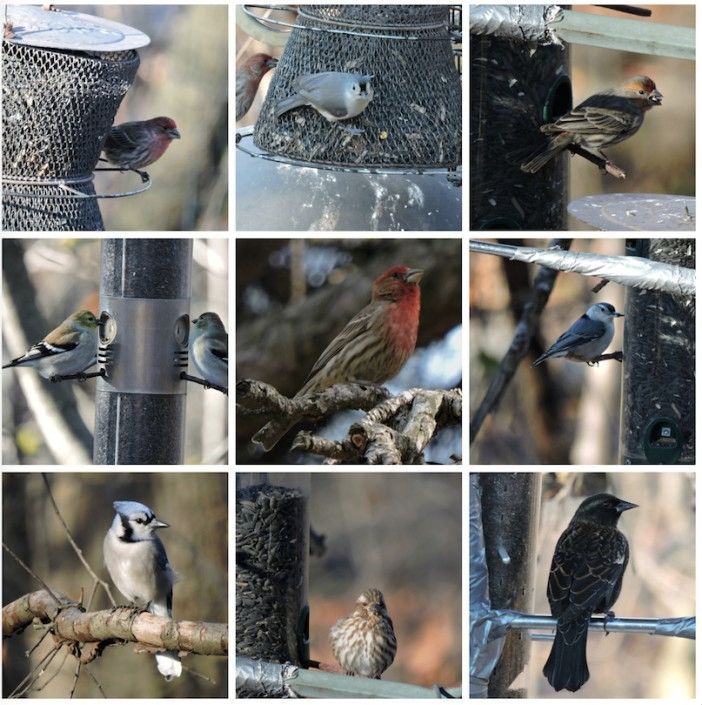Visit the Bird-Feeders At Prospect Park


Maybe you’ve been to the park many times – but did you know there are bird feeders? Every winter, the Brooklyn Bird Club puts up several bird feeders to help augment the diet of our many avian neighbors in Prospect Park. The bird feeders are located on the top of the breeze hill section of the park.
The best way to get there would be to head to the boat house (Audubon Center) and head right towards the Lullwater section of the park. Continuing right past the gazebos facing the water you’ll see a dirt path that leads to the elevated side walk.
The bird feeders consist of several stations designed to accommodate the many seed-eating birds in Prospect Park every winter. While it’s hard to say whether the feeders are more for the birds or the bird-watchers, no doubt our feathered friends enjoy the handout.
The feeders are designed with avian diversity in mind: One feeder is sequestered to the corner and holds thistle seeds for our smaller and more shy American Gold Finch friends. The largest feeder is filled with black-oil sunflower seeds. These high energy sunflower seeds help provide vital energy for our avian neighbors on exceptionally cold days.
You’ll also notice square cages with a waxy looking substance inside. These feeders contain rendered animal fat, suet, with seeds lodged in them. Suet provides extra energy and you’ll see the local woodpeckers especially excited over it.
Unexpected bird feeding
While we might think of sparrows, finches and other small birds as being peaceful granivores, it is not unheard of to see them snacking on carrion! As winter continues to roar forward and many animal meet a chilly demise, do not be alarmed if you see our sweet looking cardinals switching to meat! Birds are especially designed for survival, arguably more adapted for survival than other animal species and have tremendous flexibility in how they function.

Dinner guests?
The feeders at Prospect Park also serve to provide easy pickings for the many birds of prey around the park, especially the accipiter family of hawks, such as Sharp-Shinned Hawks and Cooper’s Hawks. Look along the deep tangles surrounding the feeders and you may see one of these stealth birds hiding in the shadows, waiting to erupt towards the feeders and snatch a bird away. It is possible but much less likely to see a Red-Tailed Hawk stalk the feeders. Red-Tailed Hawks, unlike the accipiter species, are not designed for deep brushy areas and tend to prefer hunting over the ball fields and the Nethermead.
What species might you see?
The local birders of Prospect Park come to the feeders to both admire the expected and to hope for the unexpected. While the park boasts well over 200 bird species over the years, you may be shocked to realize the feeders alone have drawn as many as 70 distinct species.
The feeders serve as an excellent spot for rare, vagrant birds to settle down and try and wait out the winter. While the Painted Bunting has moved on from Prospect Park, many birders had thought and hoped that he would take up residence at the feeders.

How to make your own simple feeder
Maybe you live near the park and you want to try your hand at seeing who you could attract! To make a simple and effective bird-feeder:
- Gather a large pine-cone (not a scented, treated one likely found in many supermarkets this time of the year!)
- Coat the surface and crevices of the pine-cone with peanut butter.
- Then simply roll your pine-cone through bird seed and refrigerate to harden.
- Finally, attach the pine cone from a low hanging tree branch with cotton string and be sure its well secured with no loops or frays sticking out. You can also use a single piece of stiff, thick wire but ensure that it is not something a bird could become entangled with.
- It is not recommended you hang a bird-feeder near a window: Window collisions are one of the top causes of bird deaths!
Relax in-front of the Prospect Park bird-feeders and see who you can identify! In addition to being an enjoyable winter activity, watching bird-feeders has been proven to help reduce anxiety and even lower blood pressure! See how many species you can identity.




